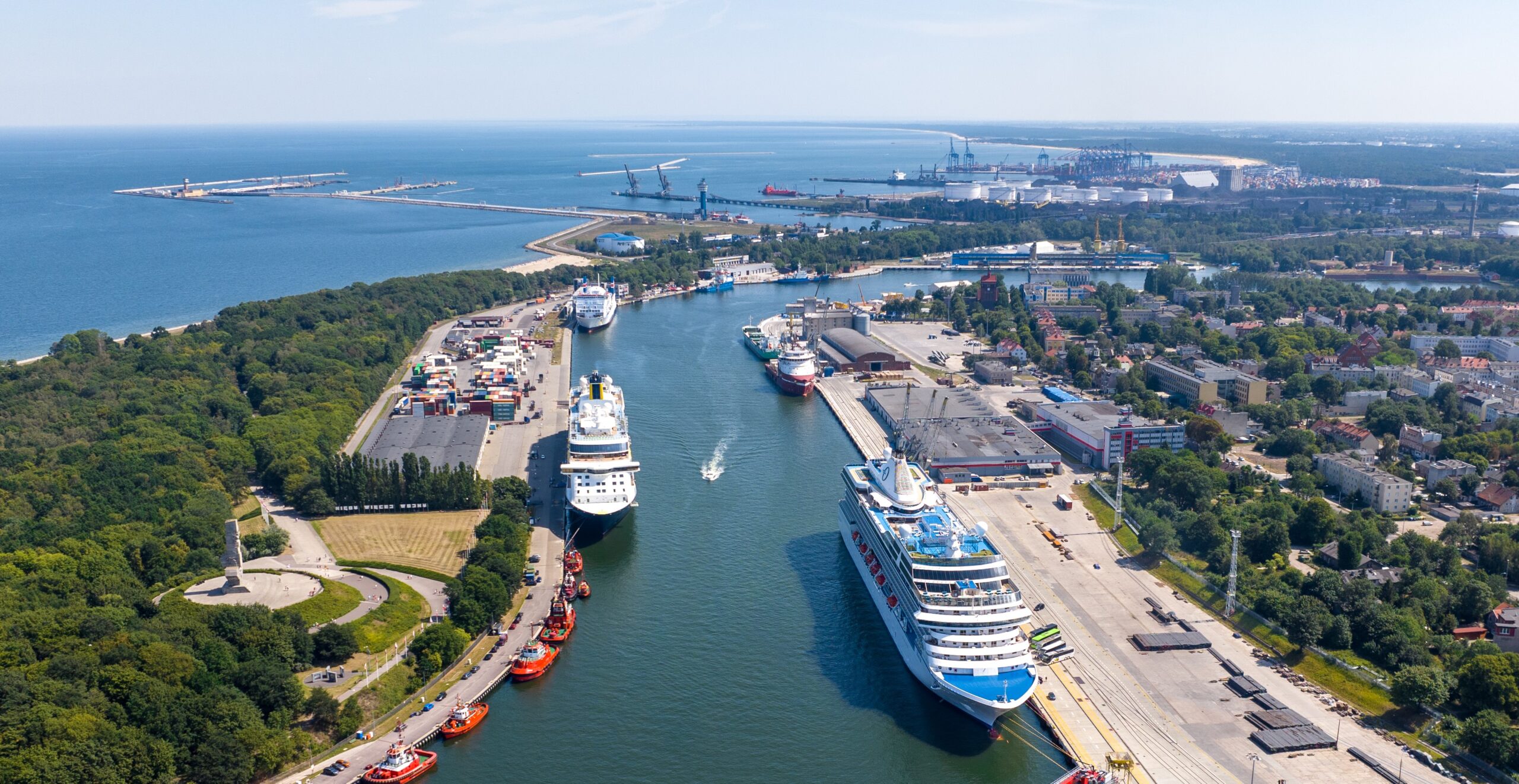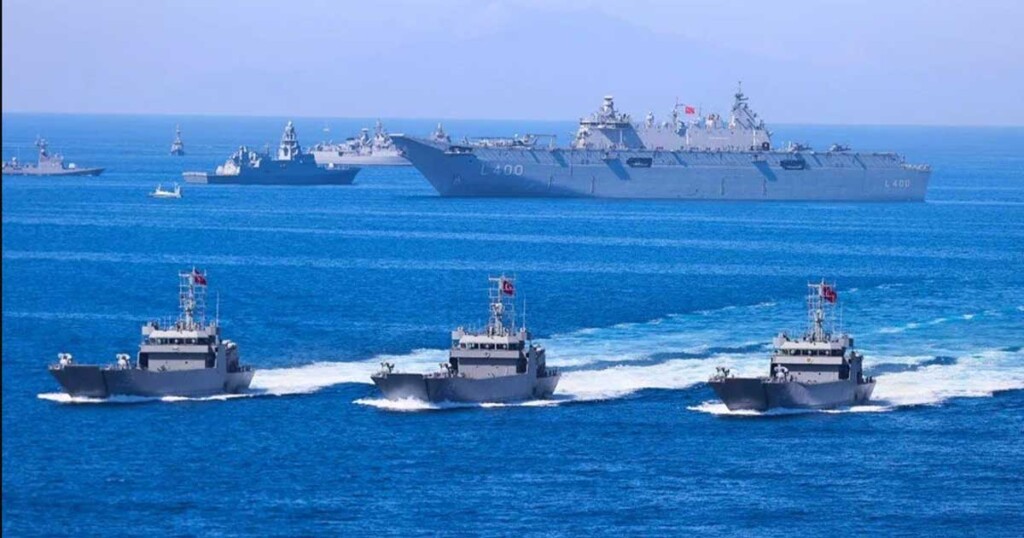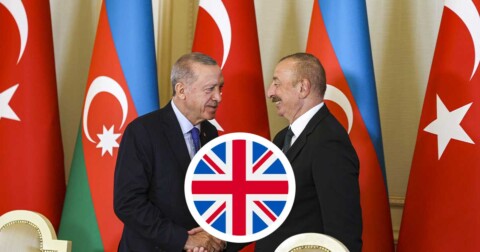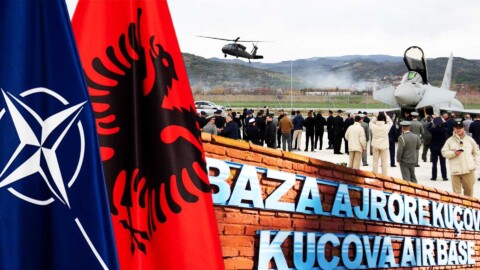“Ukraine has shown how small naval drones can shift the balance of power at sea. In the future, wars will be fought not only with large fleets but also with swarms of drones, robotic mines, and cyberattacks on port systems.”
– Admiral James Stavridis, former commander of the U.S. Navy (Foreign Policy)
The third decade of the 21st century represents a period literally shaped by disasters and wars of various scales. Even worse, military conflicts are clearly becoming the defining feature of the next decade as well — intensive preparations for them are already underway.
The whole world is preparing for future combat operations — hardly any country today can feel safe while watching the war in Ukraine, Israel’s attack on Iran, or the naval battles in the Red Sea against the Houthis. War has become the new reality.
Even worse — that new reality is global war.
Limited, local conflicts like those in Afghanistan, Iraq, and Syria are gradually disappearing, giving way to wars that in duration, intensity, ferocity, and nature resemble the major conflicts of the 20th century.
IN THE EVENT OF A NATO–RUSSIA CONFLICT…
Scientific and technological progress has provided humanity with a whole array of new tools for waging protracted wars, despite the processes of deindustrialization that emerged after the Cold War and the beginning of the globalization era. The militarization of robotics and the blurring of boundaries between civilian and military technologies directly affect the military potential even of smaller or economically underdeveloped states.
All these trends fully apply to Europe — and in this context, we observe an interesting pattern. Most of the potential theaters of war in Europe are maritime. In the Baltic and Black Seas, the Russian Federation is seen as the key adversary, while the Mediterranean and Aegean Seas are zones of conflict between Turkey and Greece.
Maritime communication lines represent an enticing target for powerful economic strikes. For example, maritime exports make up approximately 60–70% of the total exports of the Russian Federation. By launching military operations against Russia’s commercial fleet and port infrastructure, it is possible to achieve astonishing results — literally undermining the Russian economy, and with it, its ability to sustain its military machinery.
Preparations for the realization of this scenario — in the event of a NATO–Moscow conflict — are already being openly conducted on both the northern and southern flanks of the North Atlantic Alliance. These efforts are united not only by common strategic goals but also by the nature of the technical resources involved. Europe is carefully studying the outcomes of both the Russia–Ukraine war and the Houthi attacks on the U.S. in the Red Sea, preparing its own forces and capabilities in line with the latest trends in military strategy.
We cannot say with certainty whether hostilities between the Russian Federation and European countries will truly occur in the future. We cannot specify the timing, nor can we confidently predict the course and pace of events. However, the available information and combat experience from recent years are sufficient for us to attempt to forecast the nature and form of a potential conflict — which, notably, could extend beyond the borders of the Baltic and Black Seas and directly involve the Balkans, not only in terms of Bulgaria but also Greece.
THE GREAT WAR AT SEA
After 2022, a significant number of NATO member states began actively developing their naval capabilities. This trend is most pronounced in countries bordering the Black and Baltic Seas: the Baltic states, Finland, Sweden, Bulgaria, Romania, Denmark, and Poland. It reflects a clear strategic logic — an attempt to build a system of resistance to the Russian economy by reinforcing the sanctions regime through military-police operations against Moscow’s “shadow” tanker fleet.
However, there is another politically intriguing dimension to this trend. It is increasingly evident that the aforementioned countries do not place much hope in substantial assistance from NATO as a unified structure. We are witnessing the emergence of “military blocs within the bloc” — regional coalitions seeking to create autonomous military capacities, ready to enter conflict with Russia independently, without waiting for support from the United States or from individual actors such as Turkey, which might choose to ignore the precedent of activating Article 5 of the Washington Treaty on collective defense.
The lack of confidence in the unity of the North Atlantic Alliance — and the sense of a need to develop their own military capabilities — has a deep impact on the military doctrines of countries that may be involved in a future war. Contrary to the practices established during the Cold War, the states of the Baltic and Black Sea regions are increasingly relying on asymmetric instruments of naval warfare. In essence, they are adopting modern combat experiences from Ukraine and Yemen and reviving old concepts of mine warfare, rather than building classic missile fleets like those in Japan, South Korea, or China.

MINE DEPLOYMENT — A DEEPLY DISTURBING SIGNAL
What stands out in particular is the growing interest among European countries in weapons as indiscriminate and dangerous as naval mines — both in the context of maritime and land warfare. This is confirmed by the fact that Lithuania, Latvia, Estonia, Poland, and Finland have withdrawn from the Ottawa Convention, which bans the use of anti-personnel mines. Despite the obvious risks to civilian maritime traffic and international trade, several NATO countries are considering large-scale mine deployment in the Baltic and Black Seas as a sustainable and effective strategic measure. In their view, it could serve as a strong deterrent to Russia, restrict its naval activities, and support a potential trade and economic blockade — which is of key importance in the event of armed conflict.
In reality, naval mines are an extremely effective weapon. But the very decision to use them sends a deeply disturbing signal. Even if we set aside issues of international law and moral-ethical dilemmas — considering that mines would endanger civilian vessels — and look at the situation purely through the lens of logic and strategic pragmatism, the image of future war looks extremely frightening.
The mass deployment of naval mines practically means the complete suspension of maritime navigation. That, in turn, implies the shutdown of any economic activity tied to maritime infrastructure — which would deliver a devastating blow to the economies of entire regions. Such a scenario would be catastrophic not only for the Russian Federation, but also for the countries that share the waters of the Black and Baltic Seas with it.
Baltic Documents: Freight Traffic Statistics (2023–2024) According to Eurostat and Rosstat
| Port | Country | Traffic (mil. tons, 2023) | Main cargo | Export share/GDP |
|---|---|---|---|---|
| Gdańsk | Poland | 65.1 | Coal, petroleum products, containers | ~12% of Poland’s maritime exports |
| Gdynia | Poland | 28.4 | Chemicals, grain, fertilizers | ~5% of Pomerania region’s GDP |
| Saint Petersburg | Russia | 59.8 | Oil, gas, metals, containers | ~7% of total exports of the Russian Federation |
| Ust-Luga | Russia | 104.3 | Coal, oil, liquefied natural gas (LNG) | ~15% of Russia’s maritime exports |
| Helsinki | Finland | 18.9 | Paper, timber, machinery | ~8% of Finnish exports |
| Riga | Latvia | 25.6 | Coal, grain, petroleum products | ~10% of Latvia’s GDP |
| Klaipėda | Lithuania | 36.2 | Oil, fertilizers, containers | ~20% of Lithuanian exports |
Economic Significance of Baltic Ports (2023–2024)
| Port | Country | Share in Economy | Blockade Risks | Financial Conseq. (Annual) |
|---|---|---|---|---|
| Gdańsk | Poland | ~12% of exports | Collapse of German automotive industry (supply of parts) | Losses of €3–5 billion |
| Ust-Luga | Russia | 15% of maritime exports | Loss of LNG and oil export revenues | Losses of $15 billion |
| Helsinki | Finland | 8% of exports | Shortage of paper and timber in the EU | Losses of €1.2 billion |
| Klaipėda | Lithuania | 20% of exports | Agricultural crisis in the EU due to fertilizer shortages | Losses of €800 million |
| Saint Petersburg | Russia | 7% of exports | Disruption of equipment and goods delivery from China | Losses of $8 billion |
TOTAL WAR – BEYOND RULES AND NORMS
This is total war — a war waged without any regard for rules or norms, whether toward the enemy or toward one’s own economy and the well-being of the population.
Some may say this is an exaggeration — but modern military history clearly proves otherwise. From 1981 to 1988, a large-scale “Tanker War” was fought in the Persian Gulf — a conflict between Iraq and Iran in which both sides sought to paralyze the opponent’s economy by cutting off maritime trade routes. What began as a series of localized attacks on tankers quickly escalated into an all-encompassing war that indiscriminately impacted all regional maritime traffic.
One of the most devastating blows to both the economies of the Persian Gulf states and global trade was the mass deployment of naval mines. They virtually halted sea trade until international forces intervened — including American, British, French, and Soviet minesweepers and demining teams.
Despite the brutality and complete disregard for civilian shipping by both Iran and Iraq, the consequences of their actions at sea were significantly mitigated by foreign intervention, which enabled key trade arteries to remain operational. In addition, the weapons used by the warring parties were largely low-tech, allowing Soviet and American forces to clear the minefields within a few months. Neither Baghdad nor Tehran possessed the means to seriously disrupt that process.
However, if we consider today the possibility of a similar scenario occurring in Europe — in the 21st century and the age of advanced technologies — the consequences of such total war at sea appear far more grim. Like the Russian Federation, the European Union’s economy is highly dependent on maritime trade routes, and the Baltic Sea plays a key role in that system.

WARNING FOR EUROPE
What would happen to the European economy without the Port of Gdańsk or the Port of Helsinki? Without Germany’s Baltic ports or Finland’s shipyards?
“The Tanker War of the 1980s in the Persian Gulf is a warning for Europe. Back then, minefields paralyzed trade, but today the consequences would be far worse — cargo volume has increased, and mining technologies have become significantly more advanced.”
— Robert Kaplan, military historian (The Atlantic)
“In the 1980s, it took months to clear the Persian Gulf of mines. Today, if the Baltic is mined, deblocking could take years — if it’s even possible at all.”
— Admiral Tony Radakin, former commander of the Royal Navy of the United Kingdom
Currently, there is no “third force” capable of intervening in such a conflict — and modern military technologies, combined with growing hostility, could paralyze a significant part of Europe’s maritime ports for the long term.
Ideas of “targeted mine deployment” or “limited blockade of the Gulf of Finland” are not realistic. Although Moscow has not achieved major success in naval warfare against Ukraine, it has clearly demonstrated the ability to adapt to combat conditions and wage war by attrition.
Given Russia’s vast missile arsenal, experience in drone warfare, and development of robotic weapons, any attempt to block its ports or stop its merchant fleet could have extremely serious and far-reaching consequences.
In 2023, the Ukrainian Navy successfully used naval drones and mines against Russia’s Black Sea Fleet, sinking several ships — including the missile cruiser Moskva and the frigate Admiral Makarov. This reveals a key fact: even without a powerful fleet, it is possible to inflict significant damage on the enemy. Obviously, the same applies to the Russians — they possess the full spectrum of tools for waging naval warfare using indiscriminate methods, and in the event of an attempted port blockade, they are capable of using their arsenal to disrupt European trade routes.
As history and current trends show, modern naval conflicts threaten not only military targets but also the economic collapse of all involved parties. Nevertheless, there are alternatives: strengthening dialogue within the OSCE, creating de-escalation zones (modeled on the Black Sea Initiative of 2022), and investing in demining technologies and cybersecurity for maritime infrastructure.
Without such steps, Europe risks repeating the scenario of the “Tanker War” — a conflict in which, ultimately, everyone loses.





